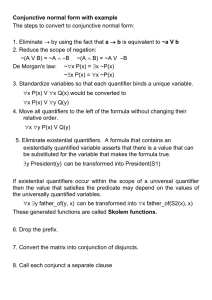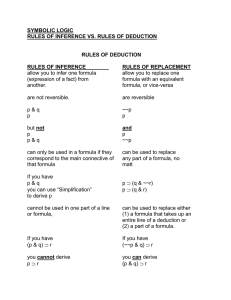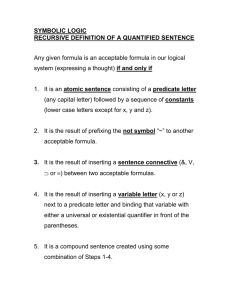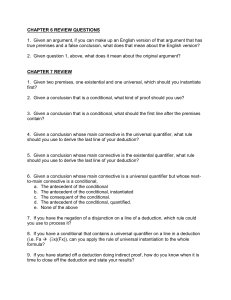Introduction To Quantified Deduction
advertisement
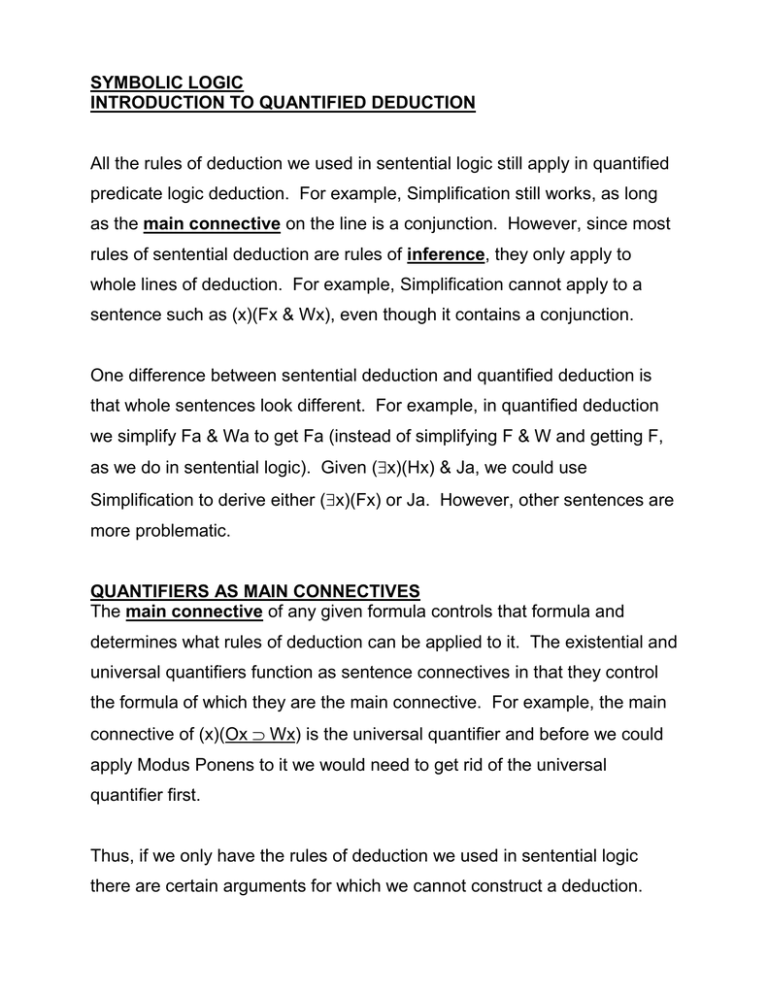
SYMBOLIC LOGIC INTRODUCTION TO QUANTIFIED DEDUCTION All the rules of deduction we used in sentential logic still apply in quantified predicate logic deduction. For example, Simplification still works, as long as the main connective on the line is a conjunction. However, since most rules of sentential deduction are rules of inference, they only apply to whole lines of deduction. For example, Simplification cannot apply to a sentence such as (x)(Fx & Wx), even though it contains a conjunction. One difference between sentential deduction and quantified deduction is that whole sentences look different. For example, in quantified deduction we simplify Fa & Wa to get Fa (instead of simplifying F & W and getting F, as we do in sentential logic). Given (x)(Hx) & Ja, we could use Simplification to derive either (x)(Fx) or Ja. However, other sentences are more problematic. QUANTIFIERS AS MAIN CONNECTIVES The main connective of any given formula controls that formula and determines what rules of deduction can be applied to it. The existential and universal quantifiers function as sentence connectives in that they control the formula of which they are the main connective. For example, the main connective of (x)(Ox Wx) is the universal quantifier and before we could apply Modus Ponens to it we would need to get rid of the universal quantifier first. Thus, if we only have the rules of deduction we used in sentential logic there are certain arguments for which we cannot construct a deduction. Example 1: Lj & Oj (x)(Ox Wx) Oj Example 2: (x)(Lx & Ox) (x)(Ox Wx) (x)(Wx) We could apply Simplification to premise one to get Oj. However, since the main connective in the second premise is not the & but rather a quantifier, and the rule of Modus Ponens is a rule of inference, not replacement, we cannot apply Modus Ponens to it. We can’t just erase the quantifier and still have a whole sentence that is true. However, by properly understanding what a quantified sentence entails, we can derive a sentence that follows from the quantified formula and which is whole even without the quantifier. To do this we need (1) rules that tell us what inferences follow from quantified formulas (which allows us to get rid of the quantifier) (rules of instantiation -- (1) for universals and (2) for existentials). To see how this works, consider what Another problem (see Example 2) is that sometimes the conclusion of a formula has a quantifier as a main connective (x)(Wx). Yet none of the rules of deduction from sentential logic produce sentences with quantifiers as a main connective. To solve this problem we need (2) rules to tell us how to derive formulas with quantifiers as main connectives (rules of generalization – (1) for universals and (2) for existentials). NOTE: All rules of instantiation and generalization are rules of inference and can only be applied to formulas whose main connective is a quantifier.
